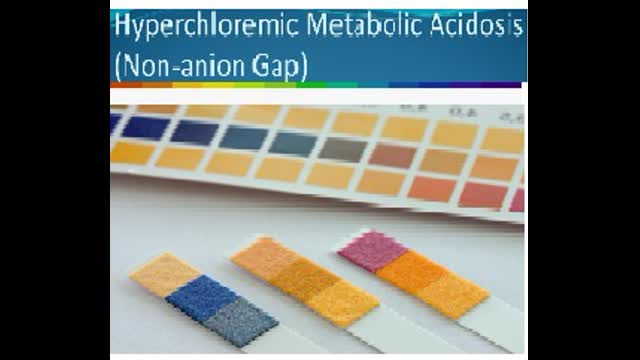CORRECT ANSWER IS A
A. Cholestyramine is a resin that exchanges anions by way of its ammonium groups. It swaps chloride anions for bile acids in the lumen of the small intestine, resulting in bile acid complexes that are excreted fecally instead of being reabsorbed in the ileum. This exchange results in gastrointestinal secretion of bicarbonate and absorption of chloride, mediated by the duodenal brush border’s apical chloride/bicarbonate antiporter . However normal functioning kidneys can compensate for this effect of Cholestyramine by increasing chloride excretion and bicarbonate retention preventing the occurrence of hyperchloremic metabolic acidosis. In conditions where this compensatory mechanism is not satisfactory, there is impairment of urinary acidification causing hyperchloremic non gap renal tubular acidosis. In the setting of a hyperkalemic normal anion gap metabolic acidosis and a urine pH less than 5.5, there should be a high index of suspicion for the presence of type 4 RTA. In this patient, the patient’s impaired urinary acidification, as evidenced by a positive urine anion gap is due to Aldosterone antagonism from Aldactone. This type 4 RTA often unmasks the cholestyramine-induced hyperchloremia and bicarbonate loss. Addition of loop diuretic would help prevent worsening of hyperkalemia while bicarbonate supplementation will correct the underlying acidosis
B. Aldactone is necessary for treating his HTN, Ascites in a setting of cirrhosis and stopping it would not be ideal solution
C. Adding loop diuretic and sodium bicarbonate without stopping cholestyramine would not be ideal as it would NOT correct the cholestyramine-induced hyperchloremia and bicarbonate loss
D. Sodium valproate is an antiepileptic medication used in the treatment of seizure activity as well as for control of bipolar disorder, depression, myoclonus and migraines. It can cause type 2 proximal RTA /Fanconi’s syndrome due to impairment of the proximal renal tubules in reabsorbing bicarbonate, glucose, amino acids, leading to acidosis- Typical electrolyte disturbances include hypokalemia, hyperchloremia, hypophosphatemia, hypocalcemia, hypouricemia, and a non-anion gap metabolic acidosis consistent with a type II renal tubular acidosis. Urinalysis reveals severe electrolyte wasting, positive urine anion gap, and inappropriate loss of low-molecular weight proteins, amino acids, and glucose. patient has no evidence of glucosuria, phosphaturia, normal serum uric acid level with hyperkalemia tendency.
REFERENCE
- Mechanisms in Hyperkalemic Renal Tubular Acidosis-https://jasn.asnjournals.org/content/20/2/251
- R. Eaves and M. G. Korman, “Cholestyramine induced hyperchloremic metabolic acidosis,” Australian and New Zealand Journal of Medicine, vol. 14, no. 5, pp. 670–672, 1984.https://onlinelibrary.wiley.com/doi/10.1111/j.1445-5994.1984.tb05023.x
- J. Blom and E. Monasch, “Metabolic acidosis in a patient with kidney dysfunction following administration of cholestyramine,” Nederlands Tijdschrift voor Geneeskunde, vol. 127, no. 32, pp. 1446–1447, 1983.
- Bernsten and S. Zoger, “Hyperchloremic metabolic acidosis with cholestyramine therapy for biliary cholestasis,” The American Journal of Diseases of Children, vol. 132, no. 12, p. 1220, 1978.


